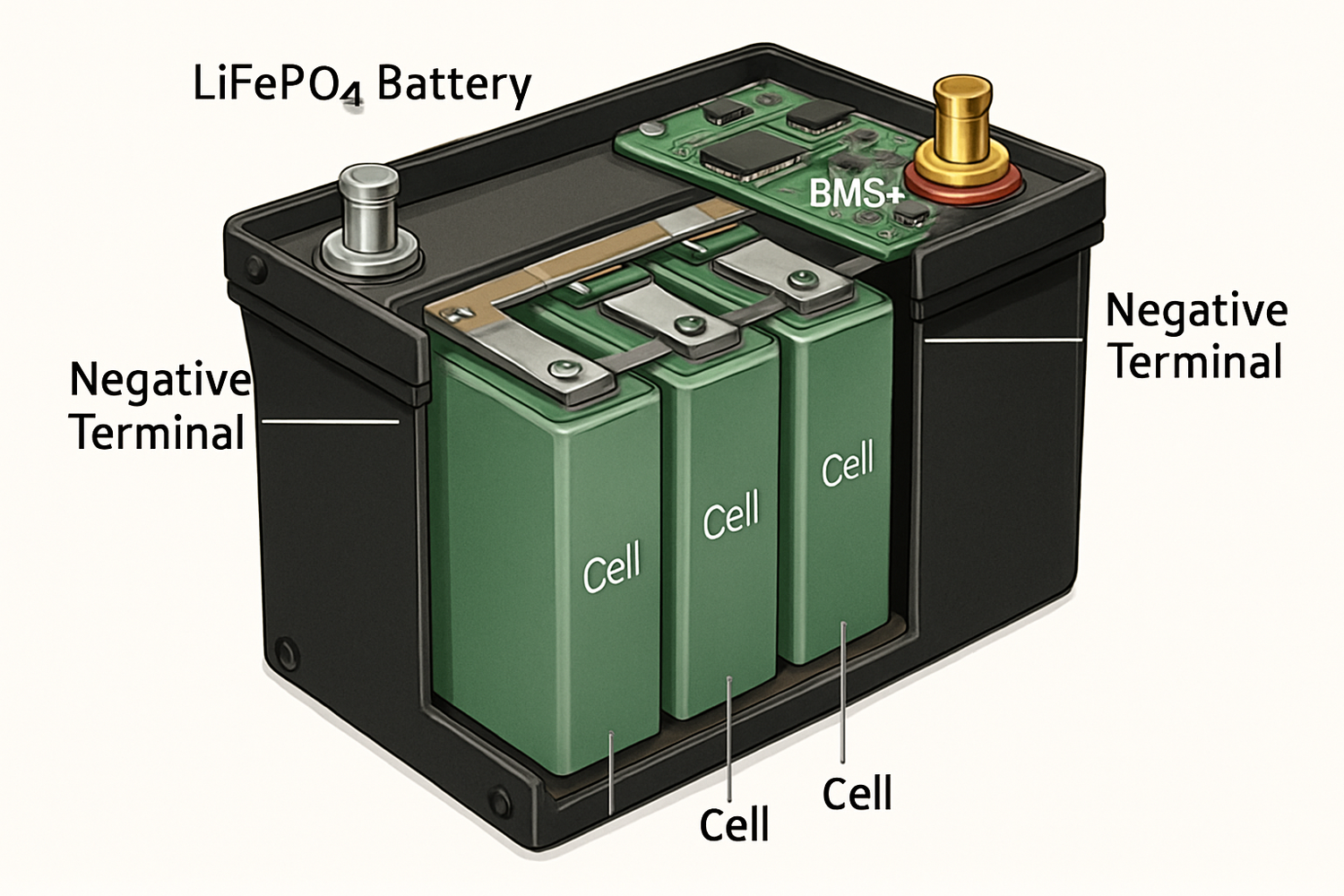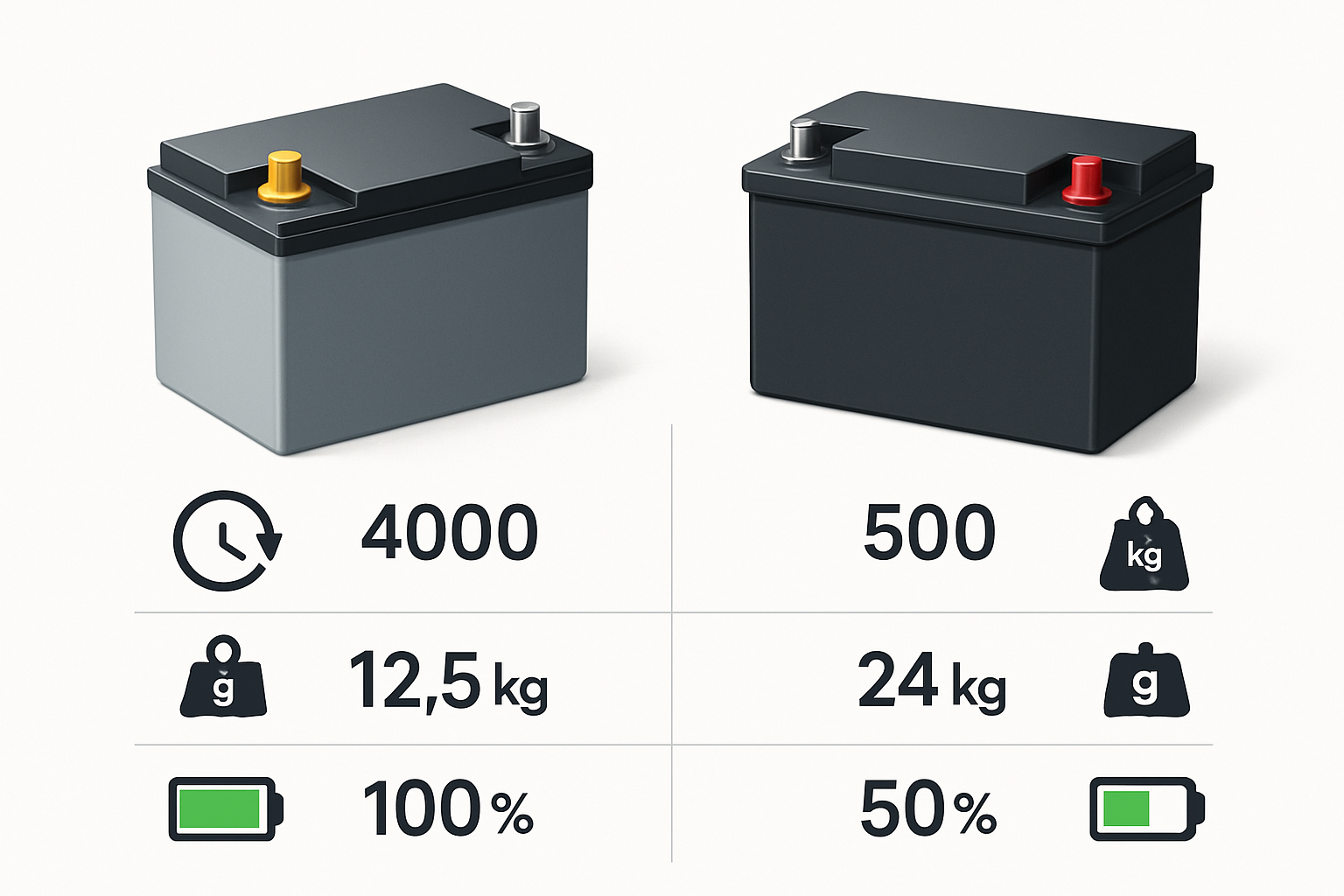The 100Ah lithium battery has become a cornerstone for modern energy storage solutions, offering a versatile balance of capacity and size. For those building solar systems, outfitting a recreational vehicle, or securing home backup power, making the right choice is critical. This guide breaks down the essential technical factors to consider when selecting a 100Ah lithium iron phosphate (LiFePO4) battery, ensuring your investment delivers reliable, long-term performance.
Why a 100Ah LiFePO4 Battery is a Standard for Energy Storage
The popularity of the 100Ah format isn't accidental. It represents a sweet spot in energy storage, providing enough power for meaningful applications without becoming excessively large or heavy. Paired with LiFePO4 chemistry, its advantages become even more pronounced.
The 'Just Right' Capacity
A 12V 100Ah battery provides approximately 1280 watt-hours (Wh) of energy. This capacity is highly practical for a range of uses, from powering essential appliances in a small off-grid cabin to running electronics and refrigeration in a campervan. Its modular nature also allows for easy system expansion, making it a flexible starting point for larger energy storage systems.
The LiFePO4 Advantage
Lithium iron phosphate (LiFePO4) has emerged as the leading chemistry for deep-cycle applications due to its inherent stability, safety, and longevity. Unlike older battery technologies, LiFePO4 batteries offer a superior cycle life, often exceeding 3,000 cycles, while lead-acid batteries may only provide 300-600 cycles. This durability makes them a more cost-effective solution over the long term. The International Energy Agency (IEA) notes that LiFePO4 is the fastest-growing segment for energy storage, largely due to its lower cost and longer cycle life.
Key Technical Specifications to Evaluate
Not all 100Ah lithium batteries are created equal. The performance and lifespan of your battery depend on several key specifications. Understanding these metrics will empower you to compare products effectively.
Cycle Life and Depth of Discharge (DoD)
Cycle life refers to the number of charge and discharge cycles a battery can endure before its capacity significantly degrades. LiFePO4 batteries typically offer thousands of cycles. Depth of Discharge (DoD) is the percentage of the battery that has been discharged. LiFePO4 batteries can be safely discharged up to 100%, though an 80% DoD is a common standard for measuring cycle life. In contrast, lead-acid batteries are often limited to a 50% DoD to avoid damage. This means a 100Ah LiFePO4 battery provides nearly double the usable energy of a 100Ah lead-acid battery.
Continuous and Peak Discharge Current
The discharge current, measured in amps (A), determines what kind of appliances you can run. The continuous discharge current is the maximum current the battery can supply steadily. The peak discharge current is a short burst of higher current needed to start motors in devices like refrigerators or power tools. A battery with a 100A continuous discharge rating can power devices totaling 1200W at 12V. Always check that the battery's discharge capabilities match the demands of your inverter and appliances.
The Battery Management System (BMS)
The Battery Management System is the brain of a lithium battery. This internal circuit board protects the battery cells from operational hazards, ensuring safety and longevity. Key functions of a quality BMS include:
- Overcharge Protection: Prevents voltage from going too high during charging.
- Over-Discharge Protection: Stops the battery from being drained too much, which can damage the cells.
- Short-Circuit Protection: Instantly cuts the connection if a short circuit is detected.
- Temperature Monitoring: Protects the battery from operating in extreme heat or cold.
- Cell Balancing: Ensures all internal cells maintain an equal state of charge, maximizing capacity and lifespan.
A robust BMS is a critical feature that distinguishes high-quality LiFePO4 batteries from inferior options.
Sizing Your System and Ensuring Scalability
Choosing the right battery starts with understanding your energy needs. From there, you can plan a system that not only meets your current requirements but can also grow with you.
Calculating Your Energy Needs
To properly size your battery bank, you need to estimate your daily energy consumption. List all the appliances you intend to power, their wattage, and the number of hours you expect to use them each day. Multiply the watts by the hours for each appliance to get the daily watt-hours (Wh). Sum these figures to get your total daily energy requirement. For example, if you need 2000Wh per day, a single 12V 100Ah battery (1280Wh) would be insufficient, and you would need at least two.
Parallel and Series Connections
One of the great advantages of 100Ah batteries is their scalability. You can connect multiple batteries to increase your system's capacity or voltage:
- Parallel Connection: Connecting batteries in parallel (positive to positive, negative to negative) increases the total capacity (Ah) while keeping the voltage the same. Two 12V 100Ah batteries in parallel create a 12V 200Ah system.
- Series Connection: Connecting batteries in series (positive to negative) increases the total voltage while keeping the capacity the same. Two 12V 100Ah batteries in series create a 24V 100Ah system.
Always use identical batteries (same model, age, and capacity) when building a series or parallel bank to ensure proper performance and longevity.
Comparing Performance and Total Cost of Ownership
A smart investment in energy storage looks beyond the initial price tag. The superior efficiency and lifespan of LiFePO4 technology deliver greater value over time.
Beyond the Upfront Price
While LiFePO4 batteries have a higher initial cost than lead-acid batteries, their total cost of ownership is significantly lower. A LiFePO4 battery can last over a decade and deliver thousands of cycles, whereas a lead-acid battery might need to be replaced every 2-3 years. When you factor in replacement costs and the greater usable capacity, the long-term value of a LiFePO4 battery becomes clear.
Understanding Performance Metrics
Efficiency is another critical factor. LiFePO4 batteries have a round-trip efficiency of 92% or higher, meaning very little energy is lost during charging and discharging. Lead-acid batteries are far less efficient, often in the 75-85% range. This means you get more usable power from every watt of solar energy you generate. A deeper analysis of these factors is available in this ultimate reference for solar storage performance, which explains how metrics like efficiency directly impact long-term value. The growing global investment in battery storage, as tracked by organizations like the International Renewable Energy Agency (IRENA), highlights the industry's shift toward more efficient and durable technologies.
A Strategic Choice for Energy Independence
Selecting a 100Ah lithium battery is more than just a purchase; it's a foundational step toward a reliable and independent energy system. By focusing on key technical specifications like cycle life, discharge rates, and the quality of the BMS, you can choose a battery that meets your needs today and for years to come. A well-chosen LiFePO4 battery is a powerful component for achieving your energy goals.
Frequently Asked Questions
Can I use a 100Ah lithium battery to replace a lead-acid battery?
Yes, in most cases, a 100Ah LiFePO4 battery can directly replace a similarly sized lead-acid battery. It offers a significant upgrade in terms of weight, performance, and lifespan. However, you should verify that your charging system (such as a solar charge controller or vehicle alternator) has a setting compatible with lithium batteries to ensure proper charging and performance.
How long will a 100Ah LiFePO4 battery last?
The lifespan of a LiFePO4 battery is measured in cycles and can also be affected by usage patterns and operating conditions. A high-quality 100Ah LiFePO4 battery is often rated for 3,000 to 8,000 cycles. For a system that cycles daily, this can translate to a lifespan of 10 years or more, far exceeding that of traditional batteries.
What can I run with a 12V 100Ah lithium battery?
A fully charged 12V 100Ah LiFePO4 battery stores approximately 1280 watt-hours of usable energy. This is enough to power a variety of devices. For example, it could run a 60W refrigerator for over 20 hours, power several 10W LED lights for an entire evening, and charge laptops and phones simultaneously. The exact devices and run times depend on their power consumption.





Leave a comment
All comments are moderated before being published.
This site is protected by hCaptcha and the hCaptcha Privacy Policy and Terms of Service apply.